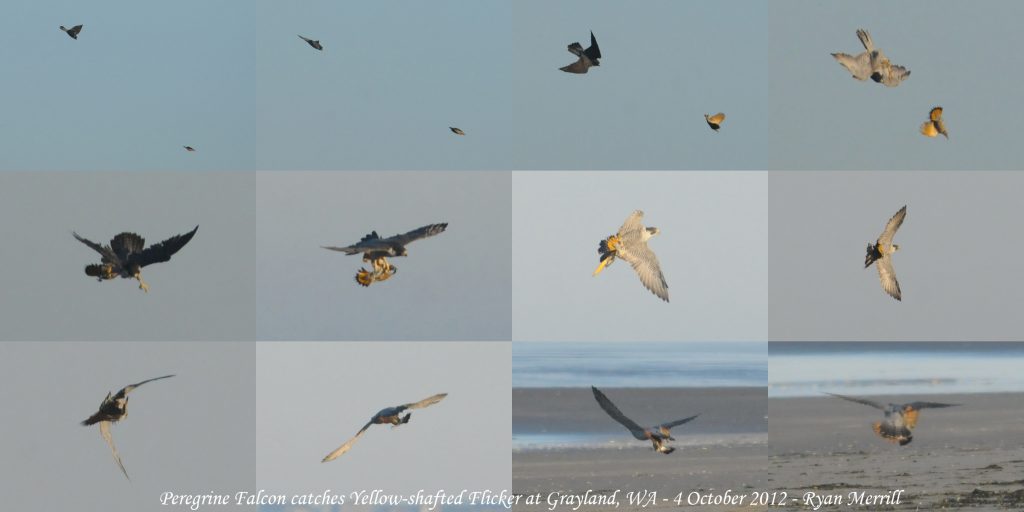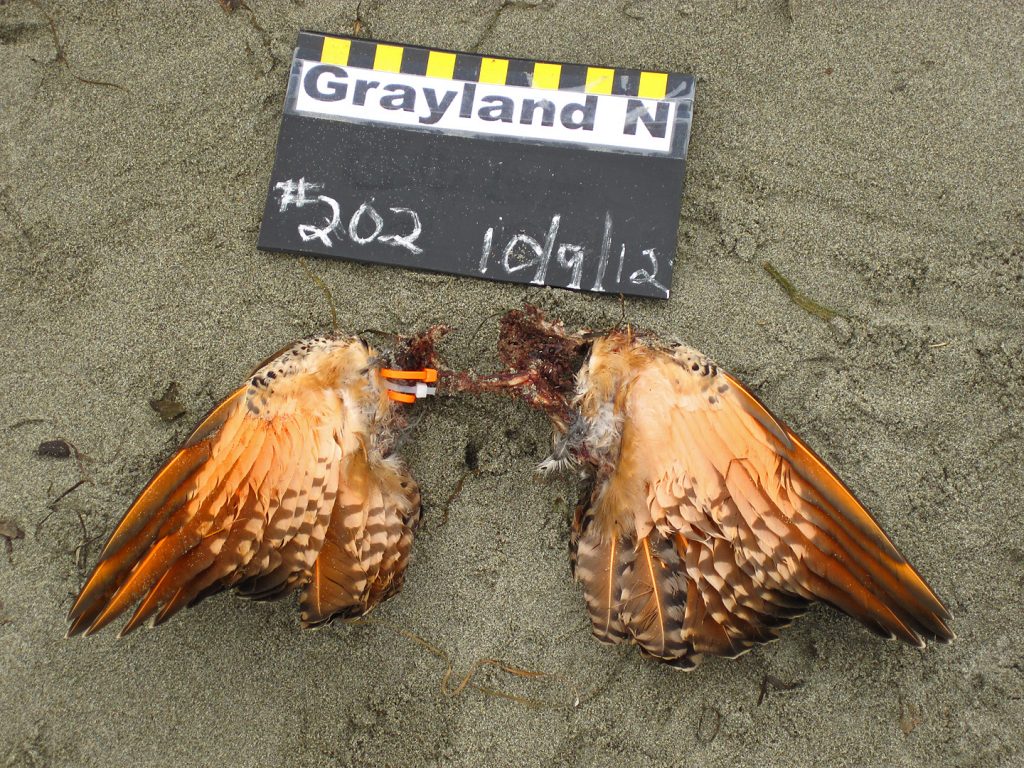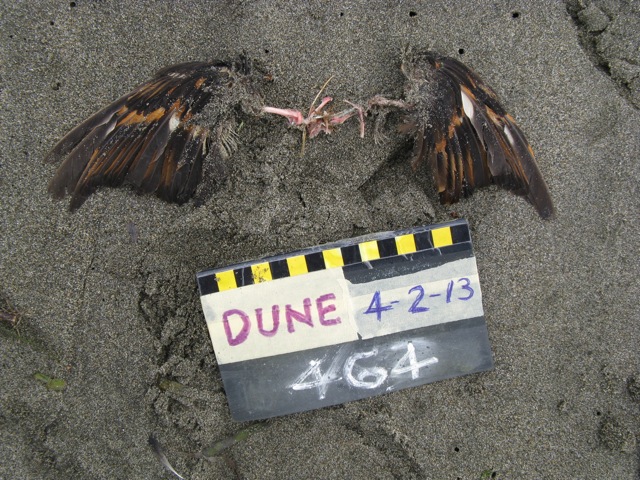“Seabird” is a part of the COASST acronym and seabirds are the focus of our program, but from the very start volunteers have collected data on ALL dead birds found, not just the ones associated with the ocean. COASST volunteers have thus far documented 156 dead-on-the-beach species from Humboldt County to the Chukchi Sea. About 30% of those are species that have no ties to the marine environment. So what gives? How does a landbird end up dead on a beach?
Sometimes, we know exactly how. We have raptors to thank for many of our out-of-place finds. COASST data verifier Charlie, watched this Peregrine Falcon (photo above) swooping on a Northern Flicker at Grayland Beach in Washington. He was curious to see if it would then show up on a survey. Sure enough, Laurie Lindeman and Bev Dage came through, finding the picked-clean wings 5 days later (photo below)!
Then there are some real puzzlers. Varied Thrushes are generally described as reclusive forest birds, but for some reason they show up more than we’d expect on COASST surveys. Compared to American Robins, by any measure a more numerous bird, Varied Thrushes (photo below) have been found 20 times, while robins only 6. The reason for this is a total mystery to us!
Life must be hard for raptors, and like any bird (think murres!) the first year of life presents special challenges. There is a real learning curve when it comes to pursuing active prey. Most of our raptor finds involve juvenile birds, like this Red-tailed Hawk (photo below) with the banded brown tail of a youngster.




